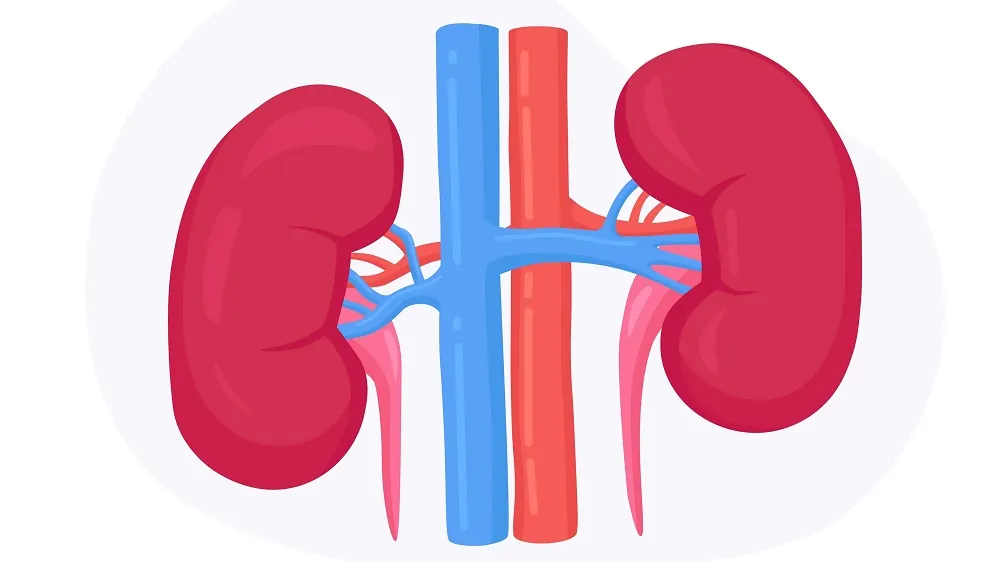Researchers have found a new protein target for senescence-related kidney diseases and published their findings in Aging Cell.
Kidney disease and fatty acid use

Read More
Chronic kidney disease (CKD) is all too common in older people, as a full third of people over 70 have moderate to severe forms of it [1]. The kidneys need surprising amounts of blood to function, as they consume a fifth of the heart’s output [2]. They are also unusually good at metabolizing fat, but problems with this system can lead to kidney fibrosis and further problems [3]. This stems from malfunctions in fatty acid oxidation (FAO), and a decrease in the related enzymes stops fats from being used for energy [4] and is directly linked to kidney disease [5].
Previous work has found that protease-activating receptor 2 (PAR2), which promotes inflammation [6], hinders fat metabolism and encourages the development of fatty liver disease [7]. These researchers, therefore, decided to investigate the relationship between PAR2, fatty acid oxidation, kidney fibrosis, and cellular senescence in the kidneys.
Rodents’ kidneys act much like humans’
The researchers first investigated kidney disease in a standard breed of rats, comparing rats aged 6 and 20 months. Interestingly, the aging of the kidneys was found to be very sex-dependent in these animals: male rats had significant elevations in damage-related gene and protein expressions along with related physical changes, including fibrosis. Female rats had far fewer statistically significant differences in the kidneys between young and old.
These changes were found to be directly related to cellular senescence. The senescence markers p16, p21, and p53 dramatically increased, as did compounds related to the SASP. However, like the physical changes, these were only predominant in male rats.
The researchers continued their work from rats to mice. Feeding mice an adenine-rich diet harms their kidneys, but like with rats, the damage was found to be more significant in males. Also just like with the aged rats, markers of cellular senescence in the kidney tubes coincided with CKD and inflammation.
In both rats and mice, expression of PAR2 was found to be signiicantly associated with senescence and CKD, specifically in the kidney tube cells analyzed previously. In aged male rat kidneys, these were found to physically coincide in the same region. Further confirming these findings, the researchers induced kidney disease in mice by using cisplatin, finding a similar relationship between PAR2, senescence, and kidney fibrosis.
An examination at the cellular level gave some clues as to why this is the case. As expected, PAR2 was found to decrease the ability of the kidney tube cells to properly process fats. This led to accumulation of these fats and an increase in lactate brought on by glycolysis, an alternate method of energy production. There was also a reduced expression of Cpt1a, a protein that decreases with senescence.
Does taking away PAR2 fix the problem?
The researchers then performed their final steps of the experiment by acquiring a mouse model that does not express PAR2. Against adenine and cisplatin both, these PAR2-knockout mice were more resistant to induced kidney disorders, showing less senescence and less lipid accumulation in the tube cells. Inflammation and fibrosis were also decreased.
While this research showed only benefits for knocking out PAR2, it is rare that an aspect of biology can be simply taken away without side effects. Furthermore, it was not tested in naturally aged animals. Further research will need to be done to determine if anti-PAR2 therapies could potentially be used in people.
Literature
[1] Kovesdy, C. P. (2022). Epidemiology of chronic kidney disease: an update 2022. Kidney international supplements, 12(1), 7-11.
[2] Duann, P., & Lin, P. H. (2017). Mitochondria damage and kidney disease. Mitochondrial Dynamics in Cardiovascular Medicine, 529-551.
[3] Kang, H. M., Ahn, S. H., Choi, P., Ko, Y. A., Han, S. H., Chinga, F., … & Susztak, K. (2015). Defective fatty acid oxidation in renal tubular epithelial cells has a key role in kidney fibrosis development. Nature medicine, 21(1), 37-46.
[4] Miguel, V., Tituaña, J., Herrero, J. I., Herrero, L., Serra, D., Cuevas, P., … & Lamas, S. (2021). Renal tubule Cpt1a overexpression protects from kidney fibrosis by restoring mitochondrial homeostasis. The Journal of clinical investigation, 131(5).
[5] Kang, H. M., Ahn, S. H., Choi, P., Ko, Y. A., Han, S. H., Chinga, F., … & Susztak, K. (2015). Defective fatty acid oxidation in renal tubular epithelial cells has a key role in kidney fibrosis development. Nature medicine, 21(1), 37-46.
[6] Heuberger, D. M., & Schuepbach, R. A. (2019). Protease-activated receptors (PARs): mechanisms of action and potential therapeutic modulators in PAR-driven inflammatory diseases. Thrombosis journal, 17(1), 4.
[7] Rana, R., Shearer, A. M., Fletcher, E. K., Nguyen, N., Guha, S., Cox, D. H., … & Kuliopulos, A. (2019). PAR2 controls cholesterol homeostasis and lipid metabolism in nonalcoholic fatty liver disease. Molecular Metabolism, 29, 99-113.




